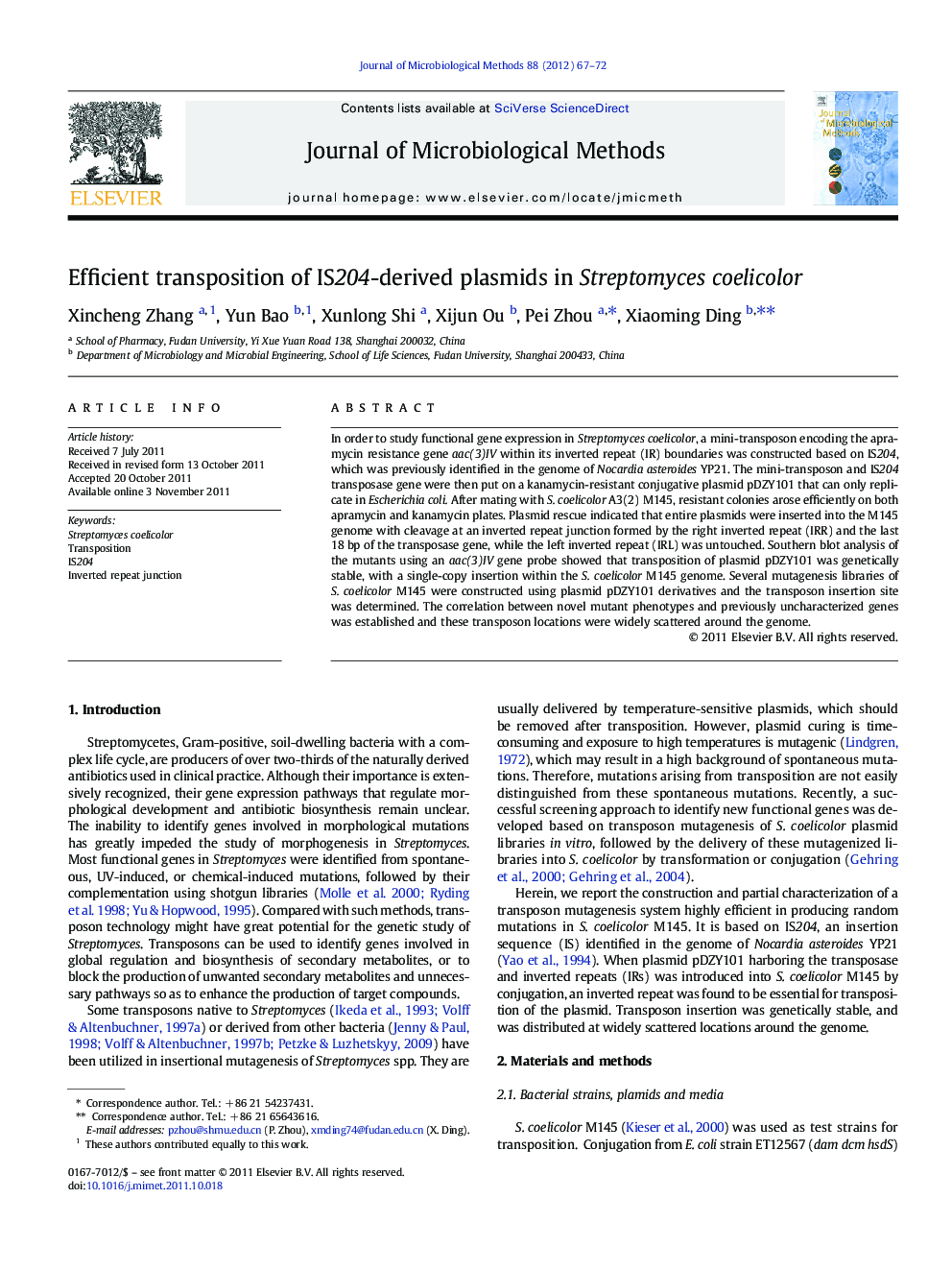| Article ID | Journal | Published Year | Pages | File Type |
|---|---|---|---|---|
| 2091507 | Journal of Microbiological Methods | 2012 | 6 Pages |
In order to study functional gene expression in Streptomyces coelicolor, a mini-transposon encoding the apramycin resistance gene aac(3)IV within its inverted repeat (IR) boundaries was constructed based on IS204, which was previously identified in the genome of Nocardia asteroides YP21. The mini-transposon and IS204 transposase gene were then put on a kanamycin-resistant conjugative plasmid pDZY101 that can only replicate in Escherichia coli. After mating with S. coelicolor A3(2) M145, resistant colonies arose efficiently on both apramycin and kanamycin plates. Plasmid rescue indicated that entire plasmids were inserted into the M145 genome with cleavage at an inverted repeat junction formed by the right inverted repeat (IRR) and the last 18 bp of the transposase gene, while the left inverted repeat (IRL) was untouched. Southern blot analysis of the mutants using an aac(3)IV gene probe showed that transposition of plasmid pDZY101 was genetically stable, with a single-copy insertion within the S. coelicolor M145 genome. Several mutagenesis libraries of S. coelicolor M145 were constructed using plasmid pDZY101 derivatives and the transposon insertion site was determined. The correlation between novel mutant phenotypes and previously uncharacterized genes was established and these transposon locations were widely scattered around the genome.
► IS204-derived Plasmids can efficiently transpose into S.coelicolor genome. ► Transposase cleavage an inverted repeat junction is essential for the transposition. ► Transposants were genetically stable with a single copy plasmid insertion. ► These transposon locations were widely scattered around the genome.
